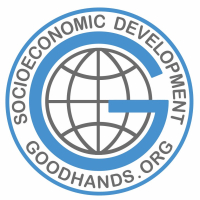Fundamental Digital Access: Expanding Learning Opportunities
Fundamental digital access is a basic requirement for inclusive education. At GoodHands, we design solutions that work without internet, expensive devices, or permanent electricity. Our goal is to ensure that learners in slums, refugee communities, and remote villages can still benefit from structured learning. By providing offline tools, simplified interfaces, and low-tech formats, we open the door to knowledge and opportunity for those often excluded. With digital equity at the core, we turn barriers into bridges and bring practical education to those who need it most.
Offline Solutions for Real-World Challenges
Traditional digital programs require stable internet and costly devices—barriers that prevent access for many. GoodHands offers offline-ready education tools designed for areas with limited infrastructure. Our solutions include preloaded learning modules, audio-driven instruction, and visual content that runs on basic laptops or tablets. These tools allow learners to engage in structured education without needing teachers or ongoing connectivity. By meeting communities where they are, we make education possible in places long overlooked.
Low-Tech Tools That Maximize Reach
Access to education should not depend on high-end technology. That’s why GoodHands creates learning systems that work on basic hardware. Our tools are designed for slow processors, small screens, and low memory capacity. We use simple visuals, guided audio, and minimal interfaces to support learning—even on outdated machines. Whether delivered by USB stick or email, these low-tech solutions empower communities to start learning right away, without expensive upgrades or digital complexity.
Scalable Formats for Resource-Limited Settings
Scaling education in underserved regions requires adaptable formats. GoodHands uses compact file sizes and modular content to support replication across multiple locations. Our formats are optimized for sharing via email, memory cards, or offline file transfers. Group leaders receive everything needed to guide sessions—no internet or training required. This plug-and-play model enables partners to implement structured learning at scale, turning resource limitations into catalysts for educational growth.
Inclusive Design for All Learners
Digital equity means designing tools for every learner, including those with minimal tech exposure. GoodHands programs use intuitive layouts, color-coded guides, and multilingual support to reduce barriers. We also provide voice-based navigation and image-based prompts to assist users with literacy challenges. Our inclusive design approach ensures that learners of all ages and backgrounds can participate—regardless of prior experience or education level. When technology is simple and welcoming, it becomes a tool for empowerment.
Building Confidence Through Independent Access
When learners can engage without constant supervision, they build confidence and independence. GoodHands tools are designed for solo or group use, with built-in repetition, clear instructions, and visual feedback. Learners can move at their own pace, repeat lessons as needed, and track their progress visually. This autonomy fosters motivation and ownership—key elements for long-term learning success. In places where teachers are scarce, this model helps create self-driven learners ready for the next step.
EXPLORE MORE RESOURCES
Discover how our digital strategies create inclusive access and how simple technologies can power meaningful learning in underserved regions.
Offline Learning Models: Removing Connectivity Barriers
GoodHands specializes in offline-capable learning solutions that require no internet to operate. Programs are delivered via USB or basic laptops, using audio guidance, structured lesson sets, and visual prompts. These materials are ideal for community hubs and regions with unreliable electricity. This approach removes one of the largest barriers to education—online dependency—and provides a practical way to launch learning where it’s needed most.
https://www.goodhands.org/en/learning/341
Inclusive Interface Design: Making Tech Work for Everyone
Our design approach centers on simplicity, accessibility, and clarity. GoodHands tools feature minimal text, image cues, and voice guidance to support learners with varying skill levels. Interfaces are tested in low-literacy environments to ensure usability. By eliminating complexity, we make digital education feel natural—even for first-time users. This strategy opens access for rural learners, elders, and anyone excluded by traditional tech-heavy platforms.
https://www.goodhands.org/en/learning/342
Learning Without Internet: Tools for Community Groups
For many community groups, internet access remains unreliable or unaffordable. GoodHands supports these groups with complete lesson kits that work fully offline. Local mentors can distribute materials via USB or email, lead sessions, and support learners through guided repetition. These resources turn informal gatherings into learning opportunities, helping communities gain knowledge and strengthen local capacity without digital infrastructure.
https://www.goodhands.org/en/learning/343
Delivery by USB & Email: Scaling Access Across Locations
To reach the most isolated learners, GoodHands distributes education tools through low-bandwidth methods like USB drives and email attachments. Each course is pre-formatted for instant use, requiring no installation or updates. This makes setup easy for remote Learning & Resources Centers, especially those in rural or underserved regions. This delivery method ensures fast, reliable access—even in areas with no online presence.
https://www.goodhands.org/en/learning/344

